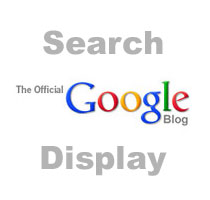 Still more curation news in Google Search-land as the company says it’s extending its social search strategy and getting the user to help with better search results through recommendation.
Still more curation news in Google Search-land as the company says it’s extending its social search strategy and getting the user to help with better search results through recommendation.
What’s the impact on display? More targeting opportunities, perhaps.
As has been previously announced, Google will allow users to start blocking results. But in a blog post today, Google product guy Rob Spiro discusses the “+1” recommendation system for search engine result pages in a post on the Official Google blog.
He offers the following as a guide:
“Say, for example, you’re planning a winter trip to Tahoe, Calif. When you do a search, you may now see a +1 from your slalom-skiing aunt next to the result for a lodge in the area. Or if you’re looking for a new pasta recipe, we’ll show you +1’s from your culinary genius college roommate. And even if none of your friends are baristas or caffeine addicts, we may still show you how many people across the web have +1’d your local coffee shop.”
What could this mean for display?
Let’s start with ad verification and whitelists for buyers.
Bidders in display ad inventory auctions across publisher sites could first look at highly recommended or shared sites as seen through Google’s search engine result pages (SERPs). And then this could be used as a signal akin to pre-emptive, ad verification where a bidder only bids on inventory that is “highly recommended” or “+5”, etc. according to Google SERP users. A “whitelist” of sites could be generated from these results which Google could even make available through the DoubleClick Ad Exchange someday.
To be clear, this is hypothetical but Google has indicated they want to get into ad verification.
Also, recommendation would seem to affect ranking on the SERP which could then offer a way to determine which page is more valuable to users and what adjoining inventory is potentially most engaging. This could be a signal to…
- The publisher’s sell-side platform (SSP) which says “we need to set a higher floor price” in that this page is capturing a valuable, engaged audience for x, y, z keywords.
- Likewise, the advertiser’s demand-side platform may look within its data management platform (DMP) and decide, “Hey users like this content; they’ll likely visit this site first when searching; earlier-in-the-session (recency) matched with search intent mojo is always good for me and my advertiser; therefore, I’m going to bid higher.”
Of course, as many know, engaging content may not be the best signal for advertisers! If the user isn’t is engaged in the content, perhaps they’re more inclined to click on the ad?
Companies have made their living off of this dynamic – where the ad is the best content on the page – such as domain name park-ers who offer no content and just ads to click.
Either way, it’s another attribute to be collected, analyzed and, potentially, optimized. I also can’t help but think that for tight verticals of keywords and content, it also seems like there’s the opportunity to game the SERP system.
By John Ebbert











